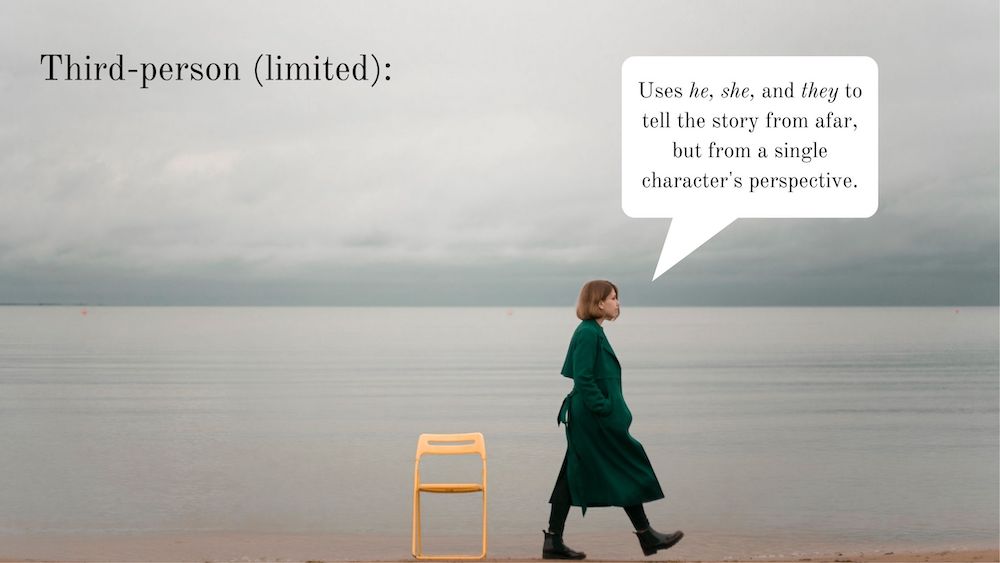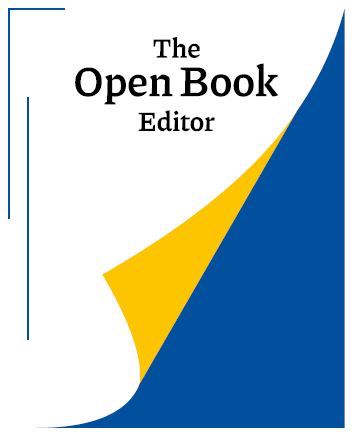When you start a new project, one of the first things you need to decide is what type of narrator to use. While a trustworthy book editor can definitely help, it’s up to you to decide which type of narrator works best for the tone and feel of your book. Take a look at the text below:
I was eighteen when I met Melanie for the first time in a crowded party. She was standing by the bar looking confident, but she was nervous deep down.
If something seems off about this, you’re absolutely right. The writing begins with a first-person perspective, but defies reason when the narrator has access to what another character (Melanie) is feeling privately.
Creeping from one narrative type to another is a common error by new authors. It leaves the reader feeling confused and disconnected.
So, how do you choose the narrator type that’s right for your story, and how do you know you’re sticking to it? We’re here to talk you through it.
The 4 most important narrator types
There are four main types of narrators in fiction and, depending on your book’s genre, different ways to use them.
First-person point-of-view

A first-person POV means the reader is experiencing everything through the perspective of the narrator. This type of narrator uses “I” to tell the story directly from their point-of-view.
The narrator is usually the main character of the story, although not always. It might be someone close to the main protagonist who witnessed events first-hand (The Great Gatsby) or is retelling happenings as they remember them (I, Claudius to some extent).
Pros:
- A limited point-of-view makes it possible for you to tell more personal stories. With a first-person POV, your reader can develop a closer relationship with the main character.
- Your reader will gain a unique perspective by seeing the world through a single character’s eyes. The story world is limited but detailed.
- The reader has a legitimate reason to connect with the POV character on an emotional level by having access to their thoughts and feelings.
Cons:
- While a first-person POV can pave the way for more personal storytelling, it can also make it difficult to share details of the wider world. Because the reader can only see the world through the narrow focus of the main character, world-building and big-picture details may need to be sacrificed.
- The reader’s knowledge is limited to what the main character knows or experiences. This means the author must find creative ways for readers to learn important details about the wider world and its other characters.
Note: This type of narrator is a biased way to tell a story, which opens up interesting possibilities for the author. With a first-person POV, the main character isn’t telling the story, they’re telling their story. This is a great technique writers can use in their favour, whether by employing the use of an unreliable narrator (Gillian Flynn’s Gone Girl) or obscuring important information from the reader to build up to a huge twist (Chuck Palahniuk’s Fight Club).
E.g.: First-person narrators usually work well in psychological-driven fiction. Psychological thrillers, like The Woman in the Window by A.J. Finn, employ this type of narrator to build great tension.
Second-person point-of-view

Second-person POV is one of the least common in fiction. This type of narrator uses “you” and speaks either to another character or breaks the fourth wall to speak to the reader directly.
Pros:
- The story feels personal to you. When the author chooses to speak to the reader, it can make them feel as if they are the protagonist propelling the story.
- Second-person pulls the reader more directly into the action. As a reader, you’ll feel like you are taking part in everything the main character does, instead of just watching them do it.
Cons:
- It asks a lot of your reader. Because a second-person type of narrator pulls the reader so deeply into the story, this can at times be emotionally taxing or, depending on the genre/contents of your book, triggering.
- Many agents and publishers aren’t fans of it. The second-person POV is rare because it’s difficult to use it effectively for the length of an entire novel.
E.g.: Literary fiction can work well with the second-person perspective, but it’s very rare to see it done well. Bright Lights, Big City by Jay McInerney and The Reluctant Fundamentalist by Mohsin Hamid are strong examples in fiction.
Third-person point-of-view (limited)

Third-person-limited POV is a very common type of narrator in fiction. The narrator uses “he”, “she”, and “they”, and tells the story from afar, while still relating the personal experiences of the POV characters.
Essentially, this type of narrator is a first-person/third-person hybrid. While the narrator speaks in third-person, the POV is restricted to one character per scene/chapter/novel.
Pros:
- All the benefits of first-person POV but with a wider, more distant perspective for the reader. If your book covers multiple POVs, it might feel more natural to jump from character to character if you use third-person limited.
- While first-person POV is proving very popular at the moment, third-person limited is the more traditional option for most novelists.
Cons:
- The reader still has limited access. This means the reader won’t be privy to multiple character’s experiences in a given scene (see the example at the beginning of this article).
- It can distance the reader from the character and feel less personal. While third-person limited allows us access to a character’s thoughts and emotions, including multiple perspectives reduces the space to connect with each one on the same level.
One of the best examples of the third-person limited point-of-view is 1984 by George Orwell. The world is revealed to the reader through the experiences and internal strife of a single character.
Third-person point-of-view (omniscient)

Similar to third-person limited, omniscient employs the use of “he”, “she”, and “they” to tell the story. However, an omniscient narrator has access to all the actions and thoughts of all the characters and beyond. Omniscient narrators can “head-hop” between characters and even share information about the world that none of the characters know.
Pros:
- Creates a bigger picture and allows the reader access to many experiences and points of view.
- The reader gets to know characters and their temperments and preferences much faster because the narrator can tell us what each person is thinking and feeling.
Cons:
- Harder to achieve a high level of tension because the reader has access to everyone’s true thoughts and motives.
- Similar to a third-person limited type of narrator, the reader must connect with multiple characters as opposed to just one. This can create a distance between the reader and the many characters in the story.
- It is easy to overdo the exposition in a bid to get the reader up to speed.
E.g.: A third-person omniscient narrator is often employed in epic fantasy and science-fiction novels, where in-depth and complex backstories and world histories are often important.
While it’s possible to avoid sharing the perspectives of characters whose motivations you want to keep secret until a big twist, you need to be careful that your writing is consistent. Otherwise, the reader may detect something is up early on because of the change in style, or feel cheated at the reveal.
Pitfalls to avoid when writing your narrator
At this point, you probably feel that writing believable characters is easier than deciding which narrator will make your book shine. But writing point-of-view isn’t difficult as long as you adhere to the basic rule of consistency.
You win your reader’s trust through how consistent you choose to be. You gain their trust through believable dialogue, a strong story, and a gripping narrative voice, so don’t break that trust by switching back and forth between multiple types of narrator.
This means you should never change your book’s POV part of the way through. If you start writing in first person, you need to stick with it to the end.
It’s not uncommon to be unsure of which type of narrator works until you start writing. So, if you reach a point where the first-person POV doesn’t seem to work, don’t worry. When you edit your book, you can try out another type of narrator to see if it’s a better fit.
It’s also important to trust your gut. If you’re working on a manuscript in a genre where first-person is typical, but you feel third-person omniscient will work better for your book, then go for it. You are the author and you know what’s best for your story. Part of the fun of writing fiction is being able to experiment with how you impart your story to the reader!
Get another set of eyes on your narrator
If you still aren’t sure what works for your manuscript, a great beta reader or book editor might be helpful.
At The Open Book Editor, our excellent professional editors can discuss with you the pros and cons of the different types of narrator, identify if your book might benefit from another POV, or help you tighten up the narrative voice. Contact us to chat about how we can help you create a strong narrator who pulls your reader into your story!


